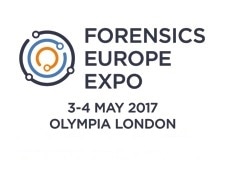Consider the evidence…
10 Apr 2017 by Evoluted New Media
Massive change, incredible innovation and a very special table – there is one sure-fire way to keep up-to-date with all things forensic… here is our brief introduction to the Forensics Europe Expo
Massive change, incredible innovation and a very special table – there is one sure-fire way to keep up-to-date with all things forensic… here is our brief introduction to the Forensics Europe Expo
The forensic landscape is undergoing a number of significant changes and positive developments particularly in the area of quality standards. There’s no question that the introduction of ISO17025 will radically transform the running of UK forensic laboratories. Accredited by UKAS, the standard will introduce quality frameworks with the aim of trying to continuously improve procedures for in-house police labs and standardise the processing of forensic evidence.
Professor Juliann Poff (from compliance experts, Qualtrax Europe,) will, at the upcoming Forensics Europe Expo, ask the question: LIMS or QMS – if I run a laboratory, do I need one of these or do I need both?
In a laboratory setting, there is a plethora of data that needs to be tracked. Very important work is being completed on a day-to-day basis and a system needs to be able to help a laboratory efficiently capture that sample analytical testing data. It needs to be able to provide traceability for the results, track the items that are used during the testing process back to lot numbers and be able to validate and QA that data to ensure its accuracy. As we know, testing laboratories of all types (environmental, forensic, clinical, food, reference, veterinary, & agriculture) have to routinely prove that their results are accurate.
The new ISO17025 quality standards regulation will be put in place to ensure that a laboratory has the proper procedures in place to tell the laboratory technicians how to perform those tests, maintain documentation on all of the instrumentation in the laboratory, MSD sheets to ensure the safety of the employees, and most importantly, be able to track back to the personnel who performed those tests to ensure that they were qualified to do so.
The Forensic Europe Expo conference brings together senior opinion formers from all fields of forensic science for a two-day conference that explores the latest advances in this rapidly evolving discipline. This year’s programme will explore the wider forensic landscape from crime scene to courtroom, exploring new forensic techniques being used and developed across the world including revolutions in Familial DNA and cutting edge research in palaeontology and mycology.
One such area includes the examination of fingers marks on currency. Finger-marks on banknotes can be of critical importance during the investigation of crime. Over the years, examiners have developed and refined a number of techniques and treatments for the recovery of marks on traditional paper banknotes. Unfortunately, most of these techniques are ineffective when applied to their newer polymer counterparts. In response to the need for a new technique, suitable for polymer banknotes, researchers from foster+freeman, the Home Office Centre for Applied Science and Technology, the University of Surrey, and West Technology Systems Ltd. set out to conduct a thorough review of potential techniques and treatments. In total 16 finger mark visualisation processes were compared, with all but 1 of the processes proving capable of revealing prints under basic viewing conditions.
However, under slightly more ‘difficult’ viewing conditions, with finger marks placed over the banknotes security features including fluorescent inks and a transparent window, it was a different story. Visit foster+freeman at the exhibition find out how they mastered these conditions.
Teaching and development are also important aspects of this year’s show – and the spectacular Anatomage Table is a perfect example of that. The Anatomage Table 5 features high-quality imaging software to examine real human anatomy. New ultra-high quality visualisation is available for all clinical cases and loaded scans while the touchscreen display provides instant access to photorealistic human anatomy. The Table now includes 3 full body cadavers that are completely annotated and fully dissectible. The image library has been expanded to 1,400 entries and offers a new category for microscopic histology scans for a variety of cell types. High-resolution regional anatomy allows for the viewing of small structures such as nerves or blood vessels that are difficult to see by any other means. [box type="shadow" ]

From the world's first virtual dissection table and gunshot residue analysis to specialist laboratory equipment and vehicles for mobile forensic units, visitors to Forensics Europe Expo (FEE) will see the very latest in forensic technology.
Over 3,000 forensic professionals are expect to attend this year’s event to source the most up-to-date technology and analytical solutions for the forensics laboratory. The exhibition will bring together over 80 of the world’s top forensic suppliers for a two day event at London’s prestigious Olympia exhibition centre.
With over 50 free to attend seminar sessions, FEE is the go-to destination to learn about the latest product efficiencies for your next project. Visit the Seminar and Workshop Theatre on the show floor and share best practice knowledge and techniques with colleagues from a wide range of disciplines and sectors.
For more information about Forensics Europe Expo and to register, please visit www.forensicseuropeexpo.com/labnews [/box]





